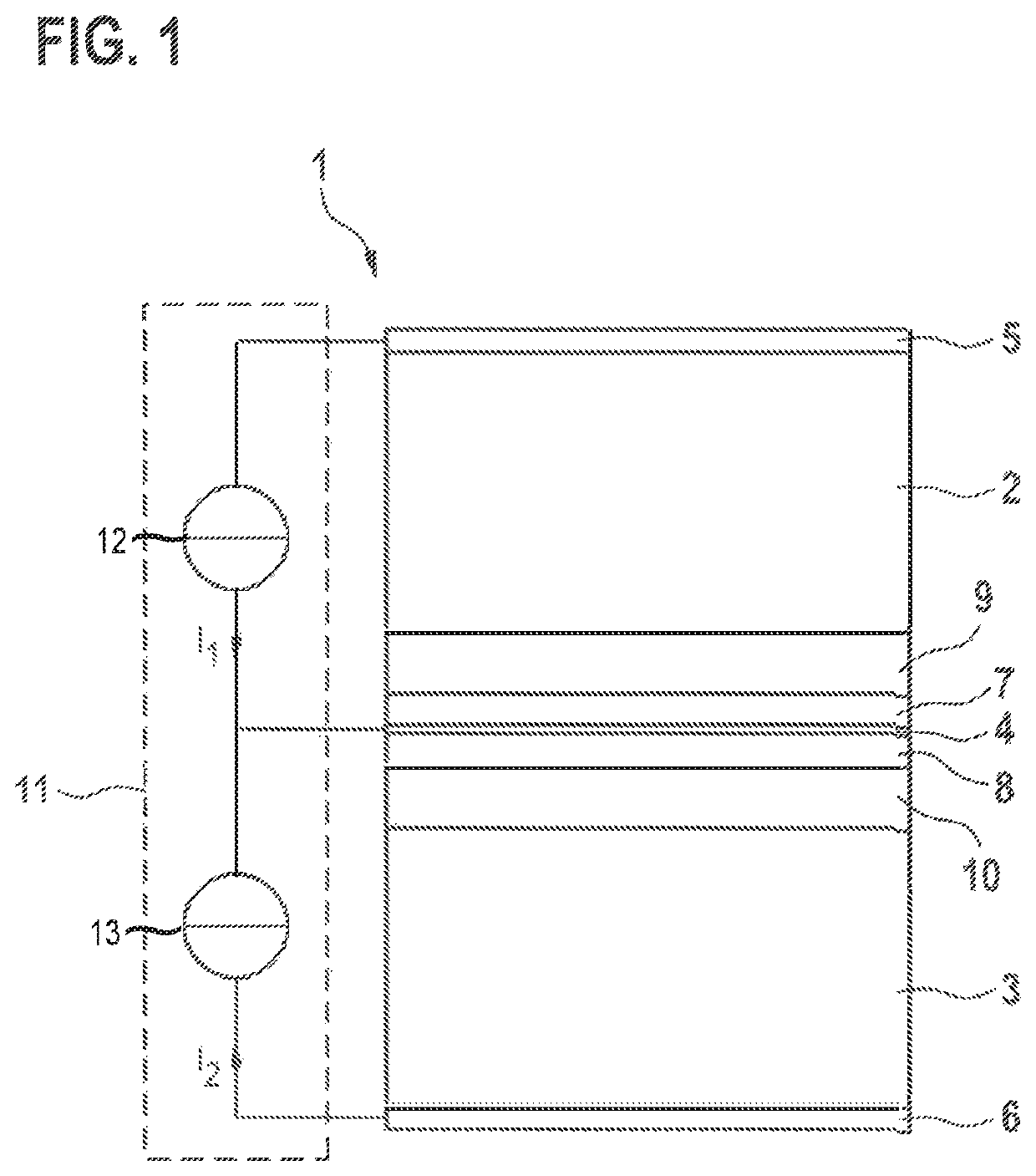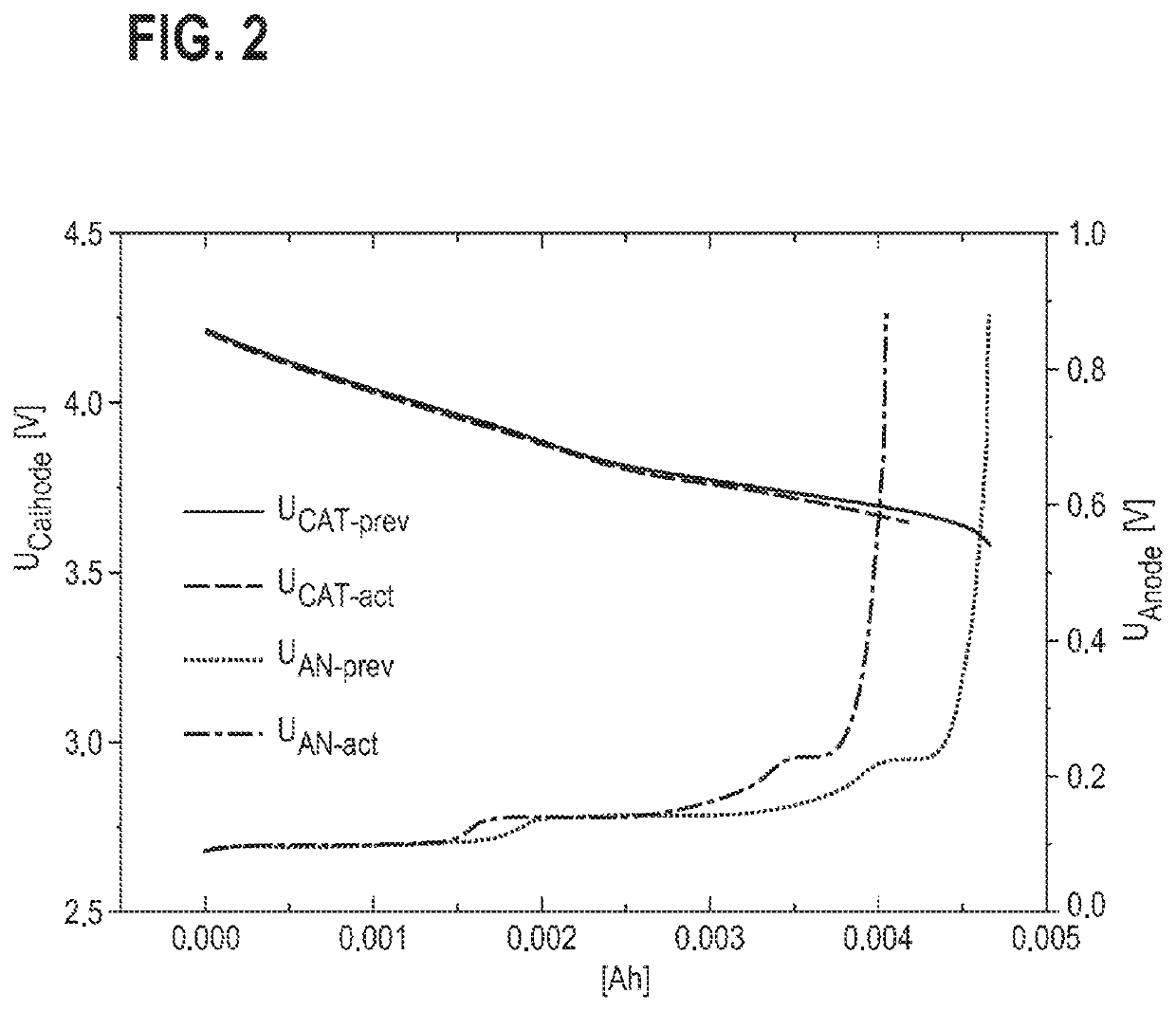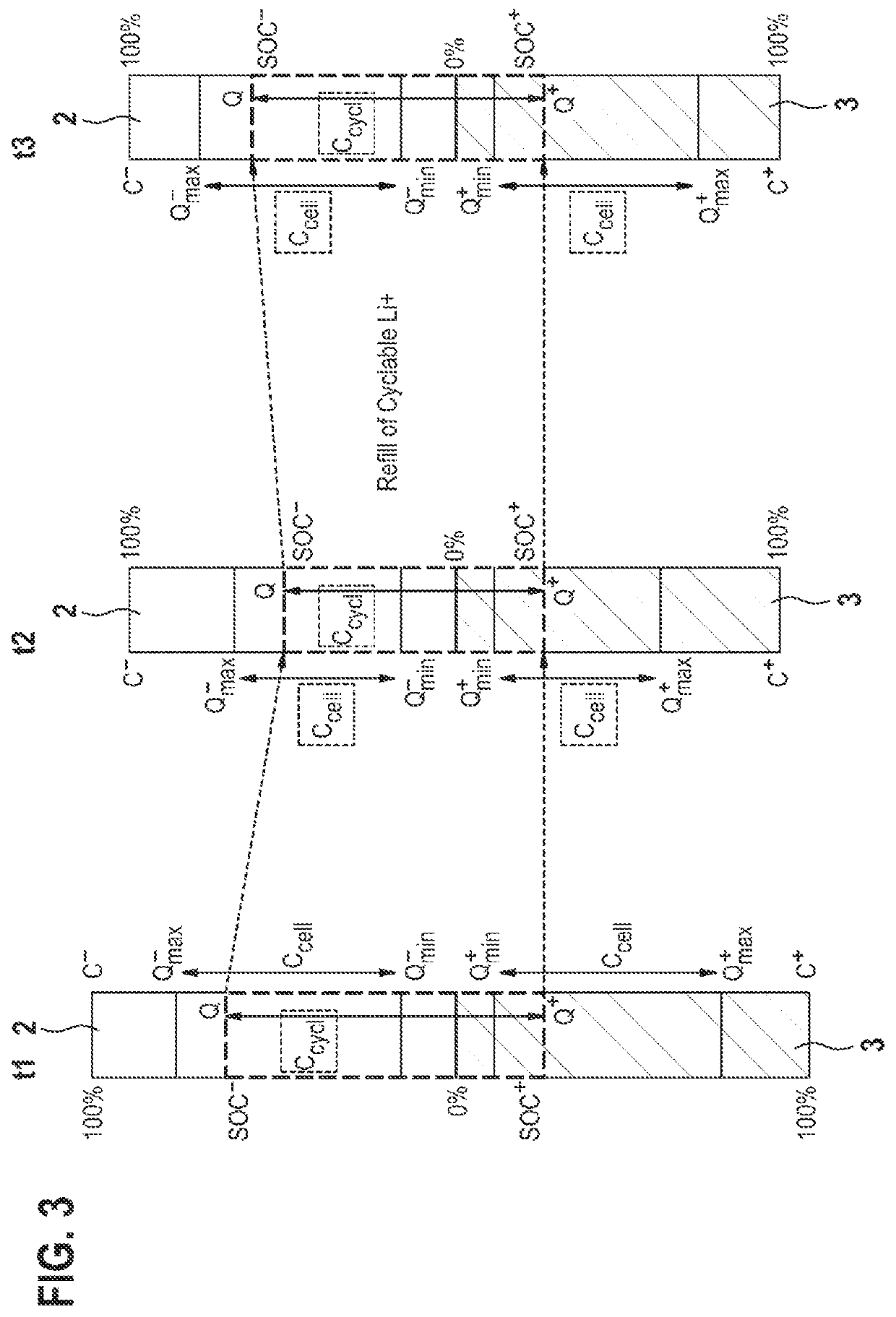Method for controlling a regeneration process of a lithium-ion battery cell that comprises an anode, a cathode and a regeneration electrode
a lithium-ion battery and regeneration electrode technology, applied in the direction of secondary cells servicing/maintenance, primary cell maintenance/service, electrochemical generators, etc., can solve the problems of cyclable lithium loss, decrease in the capacity of lithium-ion battery cells, and the inability to fully lithiate cathode materials
- Summary
- Abstract
- Description
- Claims
- Application Information
AI Technical Summary
Benefits of technology
Problems solved by technology
Method used
Image
Examples
Embodiment Construction
[0016]FIG. 1 shows an exemplary lithium-ion battery cell 1, to which the method according to the invention is applied. The lithium-ion battery cell 1 comprises an anode 2, a cathode 3 and a regeneration electrode 4.
[0017]The anode 2 is a layer that is composed, for example, of graphite, carbon, silicon, or also of composites of these materials, in combination with a polymer binder. During charging of the battery, lithium ions, which are drawn from the cathode 3, are stored in the anode 2. During discharging of the lithium-ion battery cell 1, these lithium ions are taken back out of the anode 2.
[0018]The cathode 3 is preferably composed of a lithium transition-metal oxide, e.g. LiNixMnyCozO2, or an over-lithiated lithium transition-metal oxide, e.g. LiNixMnyCozO2*Li2MnO3, or another suitable lithium compound that contains lithium ions, other metal ions and oxygen, or a lithium transition-metal phosphate, e.g. LiFePO4, and also of carbon and an polymer binder. During charging of the l...
PUM
| Property | Measurement | Unit |
|---|---|---|
| current availability | aaaaa | aaaaa |
| current | aaaaa | aaaaa |
| specific energy density | aaaaa | aaaaa |
Abstract
Description
Claims
Application Information
 Login to View More
Login to View More - R&D
- Intellectual Property
- Life Sciences
- Materials
- Tech Scout
- Unparalleled Data Quality
- Higher Quality Content
- 60% Fewer Hallucinations
Browse by: Latest US Patents, China's latest patents, Technical Efficacy Thesaurus, Application Domain, Technology Topic, Popular Technical Reports.
© 2025 PatSnap. All rights reserved.Legal|Privacy policy|Modern Slavery Act Transparency Statement|Sitemap|About US| Contact US: help@patsnap.com



